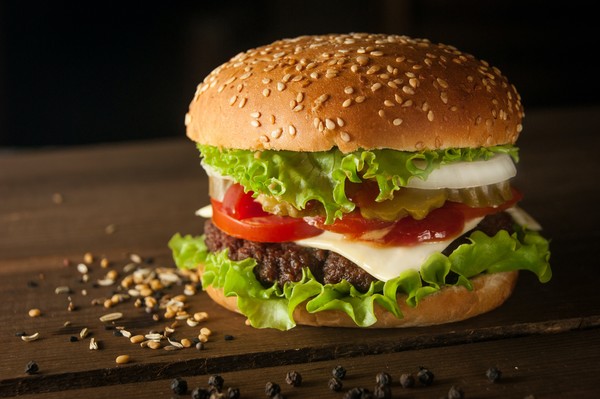The rise of off-brand Western restaurants in Korea

SOUTH KOREA is a country dominated by fast-shifting trends. Whether pertaining to beauty, fashion, or food, the choices of Korean consumers are largely influenced by the trends of that industry. Keeping up with fads is essential to remaining relevant, and this also applies to business owners in the country. The current trend is all about going global with the assimilation of Western diets to Korean culture. There are more Western restaurants—with cuisines such as American, Mexican, and Italian—than ever before, but questions have started to arise as these restaurants seem questionably similar to existing international franchises.
The Korean restaurant industry
The Korean restaurant industry is extremely congested with a recorded 669,000 restaurants in the country[1]. This is a major point of concern for many business owners as it increases competition, but there are deeper issues that lie within the industry. Privately-owned restaurants often struggle to compete with large franchises due to the discrepancies between resources. The average longevity of a non-franchise restaurant is 37.2 months[2]—lower than the reported 39.5-month expectancy for Japanese and Western franchise restaurants[3]. Rent rates for businesses are also high—especially within the highly-populated parts of Seoul; statistics demonstrate that real estate is a burden for most restaurants. The strong correlation between the longevity of a restaurant and the ownership status of the property was proven with 77.6% of restaurants over 30 years old operating in their own space[4]. Additionally, the tastes and preferences of consumers seem to shift with every passing month.
The rapid shift in food trends mainly stems from the internet with dishes like the croffle and mint-chocolate surging in online virality. The croffle, a combination of a croissant and waffle, became a trend in 2021 and has evolved into a staple dessert item in many cafes across the country. There was also the polarizing mint-chocolate craze that resulted in the creation of mint-chocolate flavored milk, so-ju, and even chicken. Specific dishes gain traction online before making their way into restaurant menus, and restaurants that incorporate these dishes reap the benefits. Being featured in the first few pages of Naver’s “Place” feature can fully book a restaurant for days, and a viral post on Instagram with the tag “mat-jip[5]” will bring in hundreds of additional customers. Essentially, trends dominate the Korean consumer industry, and the next phase seems to be establishing a global image.
Korea has a major consumer market, not just in Asia, but internationally. Foreign businesses bring in a stream of large Western franchises every year such as Texas Roadhouse or Outback Steakhouse. In order to keep up with this trend, domestic businesses are beginning to incorporate branding themes and menus heavily inspired by the West.
Off-brand Western restaurants
There are several restaurants in Korea that base their brand’s entire image on preexisting Western businesses, and some seem to be testing the legal boundaries.
FRANK BURGER—initially opened in 2019—is a hamburger chain founded and managed by Frank F&B Corp. It advertises itself as a premium burger restaurant with authentically American flavors. FRANK BURGER is a Korean company, but claims that inspiration for the restaurant was found through extensive “field trips” to the United States. It seems that during those trips, employees came across the popular franchise Shake Shack, because the resemblance between the two restaurants are uncanny. In terms of branding, the logos are unmistakably similar—they both use white and capitalized sans-serif text on a black background, both including an illustration of a green burger. Even the interior designs of their stores share a simple and industrial aesthetic. As for the menu, FRANK BURGER’s base dish, the “Frank Burger,” is near-identical to Shake Shack’s “ShackBurger.” Both places also include mushroom burgers on their respective menus, albeit with different names.
Cuchara is a Korean restaurant that serves Mexican food with eight stores across the country. Many claim that it is a direct copy of the United States’ Chipotle due to similarities in both concept and menu. Customers can build their own dishes in four to five steps, and choose between a burrito, burrito bowl, taco, and salad. Both restaurants also use a deep red hue as their brand color, and offer a food bar in all their stores where customers can pick and choose the ingredients for their meals.
Cry Cheese Burger is another franchise in Korea that took inspiration from a popular restaurant—this time, In-N-Out. Although most of the items in its menu are commonly found in most hamburger chain restaurants, its cheese fries are a copy of In-N-Out’s animal-style fries; both dishes carry a light-peach colored “special” sauce, a drizzle of cheddar cheese, and caramelized onions. In both look and taste, Cry Cheese Burger managed to favorably rebrand the dish to its own interests.
Legal loopholes in the restaurant industry
Copyright laws and regulations are few and far between when it comes to the restaurant industry. Recipes cannot be patented, therefore copying a dish holds no legal repercussions. As for logos, lawsuits are difficult to win when it is not an exact copy (including the name). One can use a similar font and color palette if the layout of the logo is even-slightly altered. Moreover, Western restaurants’ statuses as foreign businesses in Korea cause more complications to the legal system. Transnational issues will call for both American and Korean laws and further problems may arise during court proceedings. All these factors have resulted in legal gray-areas within the Korean restaurant industry, and many business owners take advantage of the lack of repercussions when it comes to stealing restaurant ideas. At present, the onslaught of off-brand Western restaurants in Korea shows no signs of improvement.
[1] Statista
[2] Bank of Korea Economic Research
[3] Statistics Korea
[4] Korean Restaurant Association & Korea Food Service Industry Research
[5] Mat-jip: Taste house

